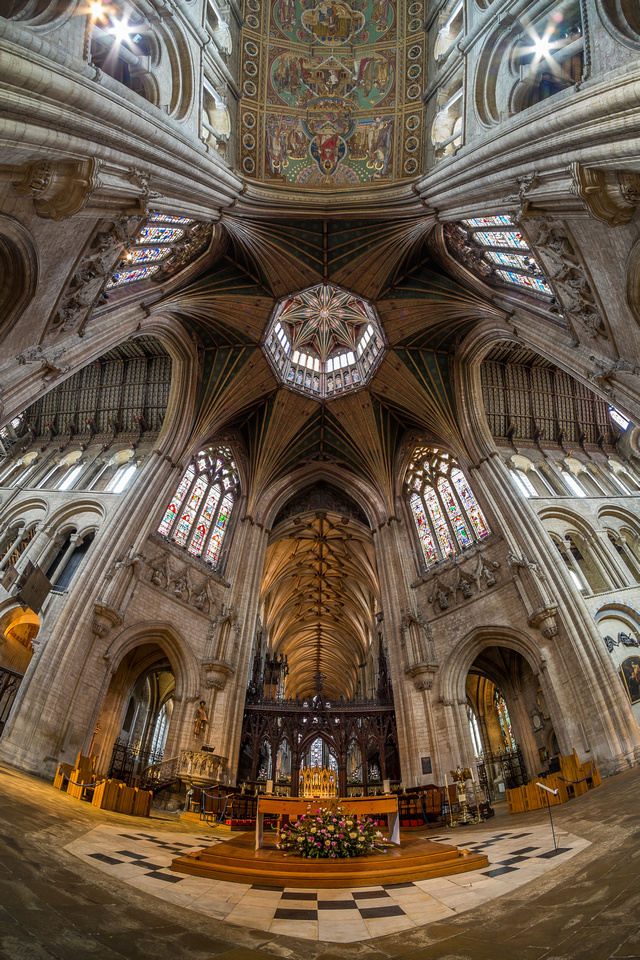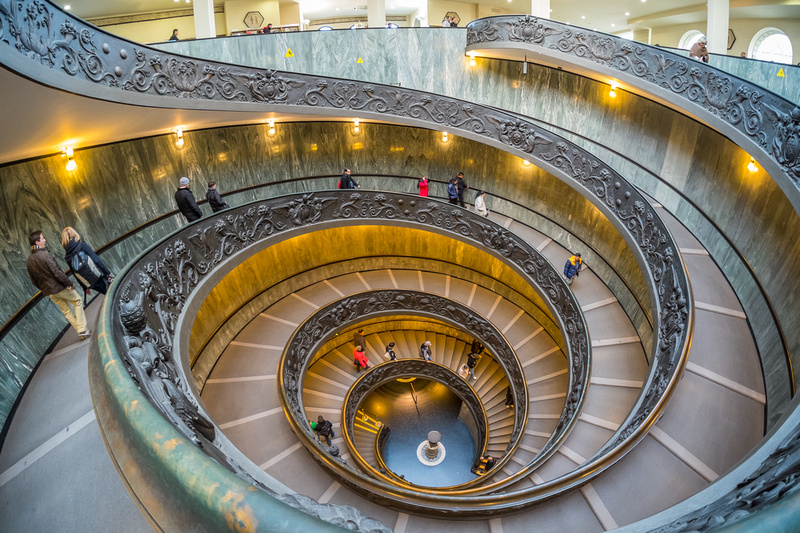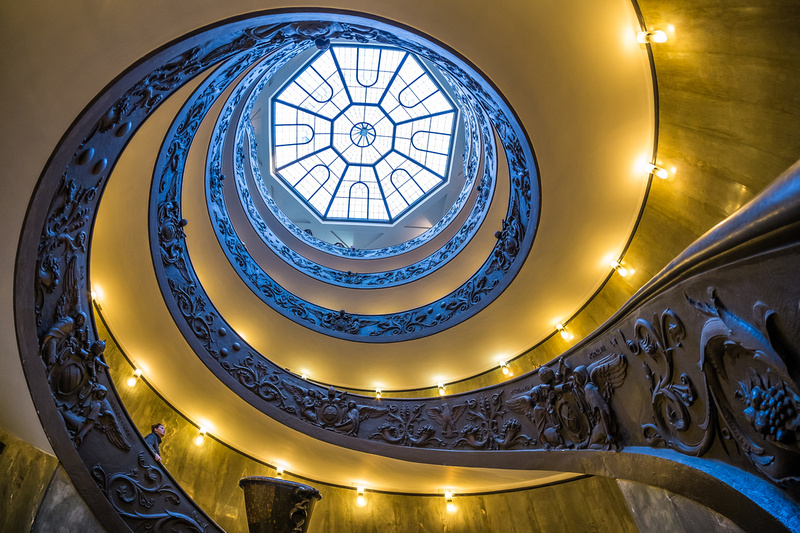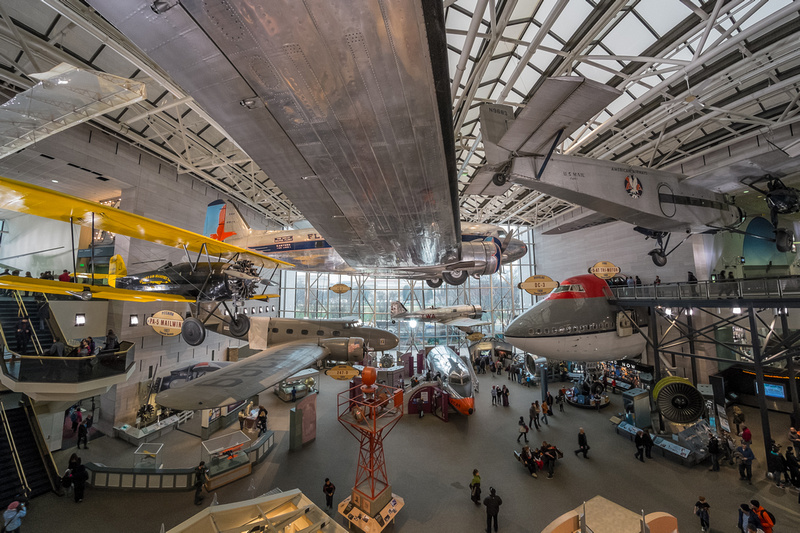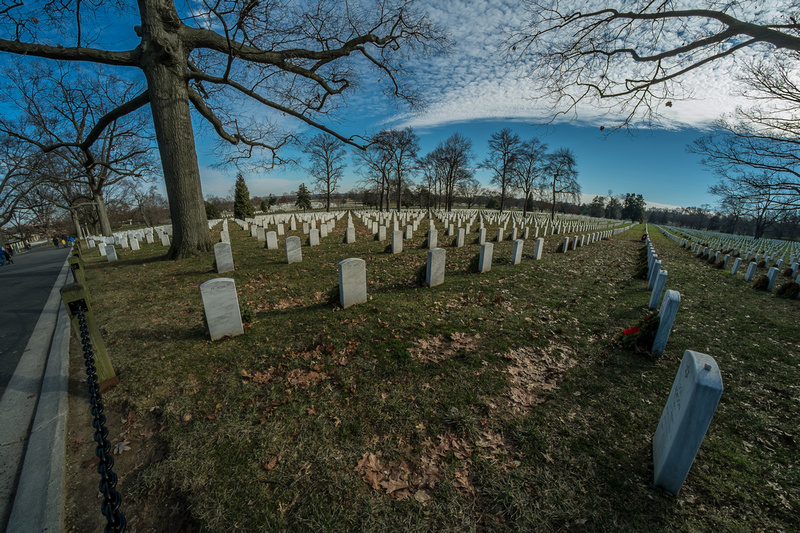Using Manual Fisheye Lens with Fujifilm X-E1
October 05, 2014
•
Leave a Comment
I had wanted to experiment with fisheye lens with my Canon 5D DSLR but could not see the point in spending too much money on a specialized lens that would only be used occasionally. One real pleasant surprise with my switch to the mirrorless Fujifilm X-E1 was finding relatively affordable third party manual fisheye lenses. These are made by the same Korean company and marketed under various names including Samyang, Rokinon, and Bower. I bought the Bower 8mm f/2.8 fisheye. The lens is small (2.2", 56mm long) and gives an effective 12mm (full-frame equivalent) fisheye with 180 degree angle of view coverage. That’s pretty wide and I had accidentally photographed my fingers, feet or tripod feet with it. Check the edges of your focusing screen before taking the shot. The lens comes with a permanent lens-hood; it does a decent job overall with flare-control considering its super-wide coverage. There are no electronic contacts, so auto-focusing and electronic info is not transferred between the lens and camera. The EXIF info for aperture will default to f/1. That's a bit annoying but that is the downside for a manual lens.
Set up Using the lens for the first time. Set Mount Adapter Setting in Shooting Mode in the camera to 8mm, so the focal length is properly recorded in EXIF. This needs to be done once only (unless of course you also use other manual lenses with the camera). Other camera settings (to be repeated) whenever you change from using a Fujifilm AF lens to using the manual fisheye lens.
Guidelines & Examples Below are guidelines for camera/lens settings based on my experiences with using the fisheye lens over the past year. Using the manual fisheye is relatively straight-forward with Aperture priority.
Using tripod for best image quality:
Here's an example of an interior architectural shot of the beautiful Ely Cathedral in Cambridgeshire, England.
Ely Cathedral (Fujifilm X-E1, 8mm, 3.5s, f/8, ISO 200)
Hand-held: especially in places where use of a tripod is not convenient or allowed (i.e. most museums and busy places).
Vatican Staircase - Looking Down (Fujifilm X-E1, 8mm, 1/30s, f/5.6, ISO 2500). This image was featured in National Geographic Your Shot: Italy.
Vatican Staircase - Looking Up (Fujifilm X-E1, 8mm, 1/15s, f/5.6, ISO 500). This image was featured on National Geographic Travel 365 on 24-Feb-2014.
Air and Space Museum, Washington DC (Fujifilm X-E1, 8mm, 1/15s, f/5.6, ISO 2500).
Arlington National Cemetery, Virginia (Fujifilm X-E1, 8mm, 1/180s, f/11, ISO 200).
Be sure to reset camera settings upon changing out the fisheye lens to your Fujifilm AF lens. Two main areas to reset:
Overall, I’m happy with the value and image quality from this lens. It opens up more creative possibilities; it is small and fun to use. It is especially great when working indoors with circular, spiral shaped architectural elements.
Keywords:
air,
architecture,
arlington,
blog,
bower,
camera,
cathedral,
cemetery,
choo,
ely,
england,
f/2.8,
fisheye,
fujifilm,
lens,
manual,
mirrorless,
museum,
national,
photography,
raymond,
review,
space,
spiral,
staircase,
travel,
using,
vatican,
virginia,
washington DC,
x-e1
Comments
No comments posted.
Loading...
|
